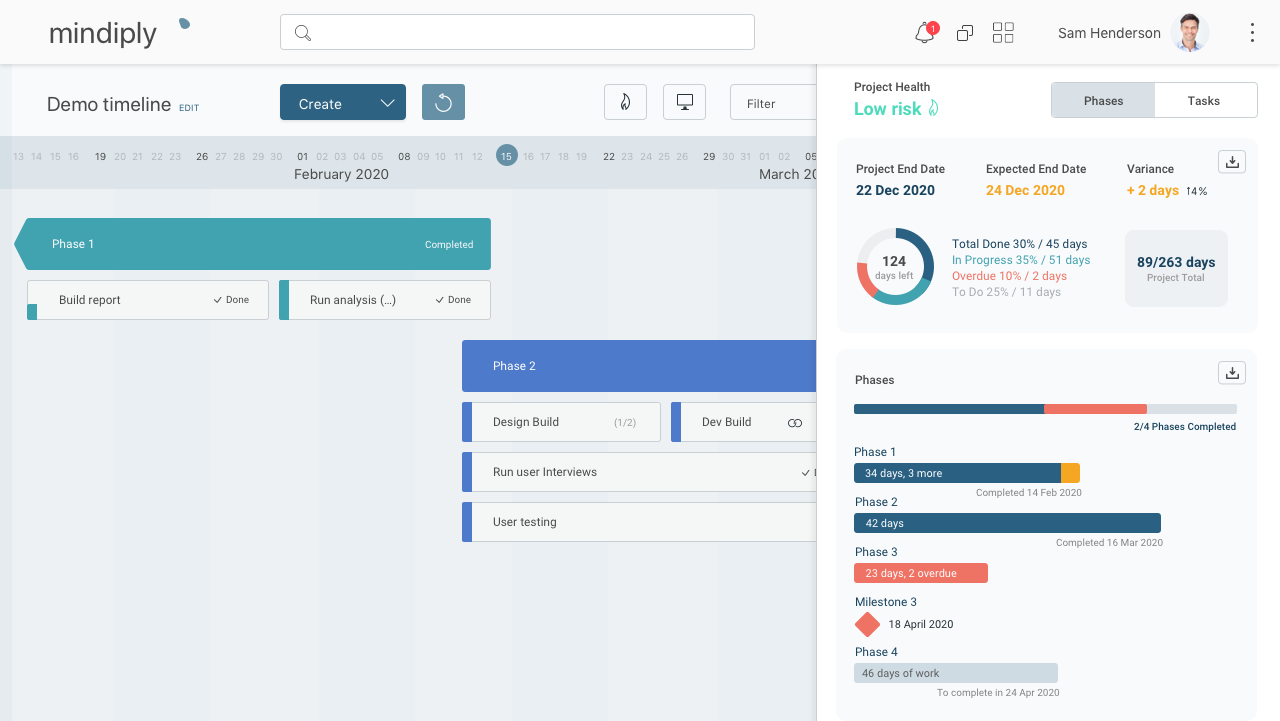
Stop Missing Deadlines with Two Project Management Tips
Francesco Marcatto18 Jul 19
There’s a classic Woody Allen quote that says, “If you want to make God laugh, tell him about your plans”. No matter how hard we try, our plans will almost never work to absolute perfection. As any Project Manager knows, throughout the implementation phase of any given project, there will be mishaps along the way.
However, this doesn’t mean that Murphy has full reign over our project. For example, a PM can implement already in the planning phase some “fail-safe” mechanisms to ensure that, despite unforeseen consequences, the project can move ahead without fail.
Most problems, however, can be effectively dealt with if you can spot them early on, and this is especially true for the number one problem when managing a project: missed deadlines.
Indeed, it’s one of the many responsibilities of the project manager to stay vigilant and identify potential problems and blocks early. In this article, we deal with two ways for minimizing the missed deadlines problem: spot problems early on and create better forecasts.
Compare plan vs. reality
A forward-thinking PM always looks at the project estimations and compare them with the actual progress. If you something is lagging behind, there might be some issues going on and it’s better to investigate immediately.
In these instances, it’s always the best practice to approach the team member responsible for the task or activity and help them identify the problem and assist with solutions. Let them provide you with a more accurate portrayal of the issues they are facing, and see how you can utilize your resources to help speed up the solution.
For this “compare plan vs. reality” approach to be effective, you should always be aware of the current trends of progress. Indeed, you should be able to recognise potential discrepancies early on, when there is still time to act and to correct the route. In other words, you must always be up-to-date with project progress.
Many PMs use tools such as the Gantt chart for getting a visual representation of their plans. At the beginning of the project, the Gantt chart will display the ideal flow of the project, but it should be constantly updated with data about tasks and activities progress for it to be still useful even during the implementation phase of the project. So, here’s the big question: is your Gantt chart (or any other way you use to summarise your project) an accurate representation of what’s going on in your project, or is it still representing what should have been, while in reality you are already behind schedule?
We all know that getting a constant flow of updates from coworkers is often a painful and frustrating activity. As I wrote in another article, an effective way of receiving updates without having to chase down people, consists in establishing a Communication Routine, that is an easy to manage methodology of communication.
Essentially, a Communication Routine relates to established times when team members and managers get together to discuss the overall “health of the project”. What this means is that they provide their feedback on the progress in their particular area on a specific day of the week.
Depending on the leadership style you implement within a project, these routine checkups could be once a week, or multiple times throughout the week. It really depends on the complexity and urgency of a task.
However, it’s important to find the right balance for these routine checkups. While it’s important that you are informed all the time, the rest of the team would much rather focus on their individual tasks. If you force your team to provide updates too frequently, it could become a demanding task which in turn will demotivate them.
Thus, creating the right balance is key. Once or twice a week is usually more than sufficient. Especially when used in tandem with digital tools to help track progresses.
Now that you’re up-to-date and your Gantt chart represents the current state of the project, you can compare reality vs. ideal progress and see if there are some warning signs which will require your intervention before things go really bad.
Create Better Forecasts
If we could provide better task-duration estimates, then we should drastically reduce the number of missed deadlines, Captain Obvious said. Too bad we’re all strongly biased to provide over-optimistic forecasts. It’s the well-known planning fallacy, a cognitive bias that has been studied also by the Nobel laureate Daniel Kahneman and his all-time colleague, the late Amos Tversky.
In a nutshell, we systematically underestimate how many resources (usually time and money) are needed to complete a project. This happens for small and big projects, but of course it is stronger for bigger and more complex projects.
So, it is true that we often receive unrealistic deadlines from stakeholders, but the sad reality is that also the deadlines we create ourselves are usually too strict.
It is admittedly very hard to completely overcome the planning fallacy. There are, however, some principles we can follow to start creating better forecasting.
Principle 1: Use past experience and involve experts
No matter the project you are doing, someone somewhere else has done something similar. This means that there is some public data on the given time frames. Look for existing data or involve people who have expertise with specific tasks to help with the forecasting. If a data engineer tells you that minimally it will take 4 weeks to complete a task, take that as an Optimistic Estimate (yes, even experts are somewhat prone to the planning fallacy).
Principle 2: Break down big tasks
The planning fallacy is stronger for big, complex activities. So, it’s better to break down the bigger tasks into smaller ones. This way you should be more accurate in forecasting the time needed for each of those sub-tasks.
Principle 3: Use Confidence Intervals
As a Project Manager, you should have a firm understanding of probability and statistics. We all know the PERT model which is Optimistic + 4(Most Likely) + Pessimistic)/6. This gives us the median estimate of the probability of achieving a specific task. Utilizing these confidence intervals, you have the ability to estimate project completion based on the associated confidence level. There’s a nice video-tutorial here.
Principle 4: Add a 20-30% buffer and take forecasts with a grain of salt
Understand that when you make an estimate, it isn’t law. On paper, things always look easier than in real life. Even if you did all the homework for creating a sound forecast, there are many variables that can influence the outcome of a specific task. Utilizing the Confidence Intervals, you can create a best-guess when a specific task would be completed, but then it’s always good practice to add a 20% - 30% buffer to your estimates, especially if you are working on a new project for the first time. Things might change, and this buffer will give yourself and your team enough time to fix any mishap that might occur on the way.
Bottom Line
Having the ability to spot a problem early in the process can save you a lot of time and ensure that your project is a success. Therefore, it’s very important to have a good communication routine, so you are always up-to-date and can compare the project estimation with the current performance.
Moreover, being able to create better estimations, reducing our natural over-optimism helps a lot. Use past data, confidence intervals, and be flexible in your approach. Having said that, there will always be some unforeseen issues that arise, mainly because they are literally not able to be calculated.
Thus, don’t give Murphy the opportunity to rain down on your parade, plan accordingly and create a buffer for success. This will allow for “unforeseen issues” to be resolved quickly, and so you’ll (almost) never miss a deadline any more.
Looking for an online tool that will make your life as a Project Manager easier, and engage your teammates and stakeholders? Try for free Mindiply Timeline, a new smart tool for project management!









